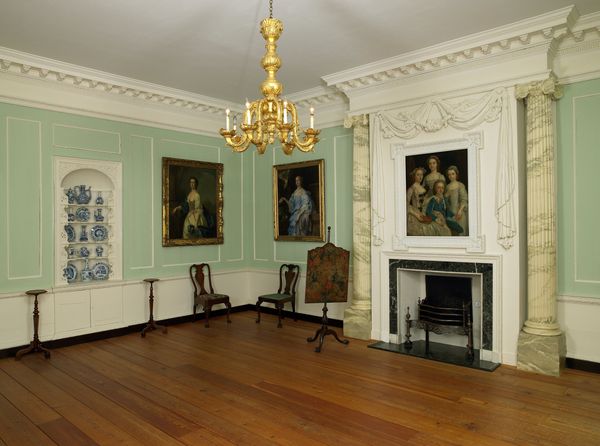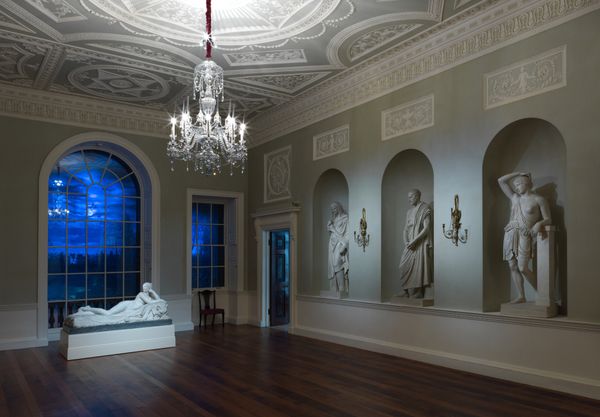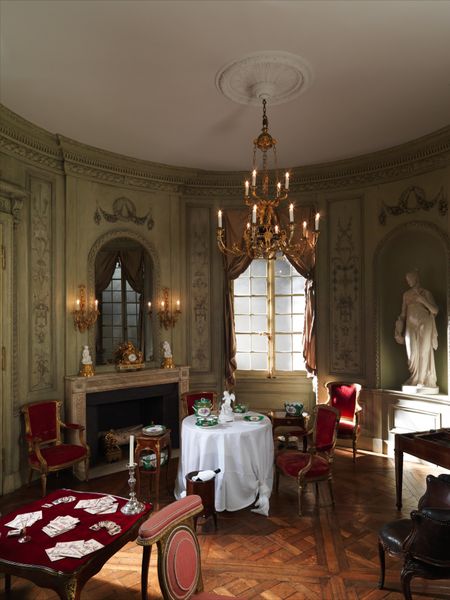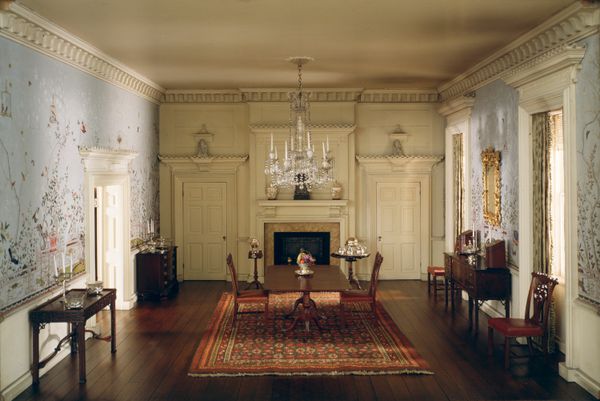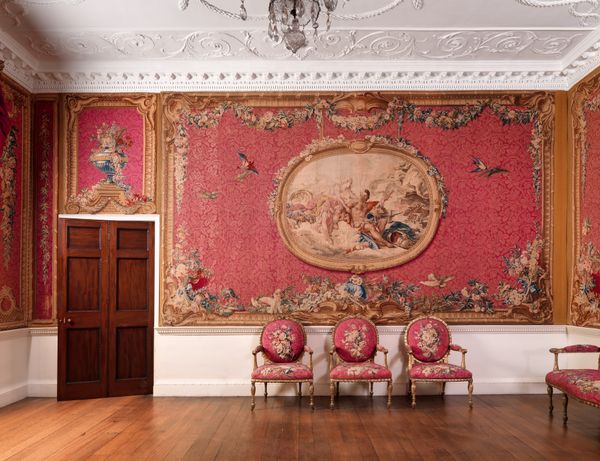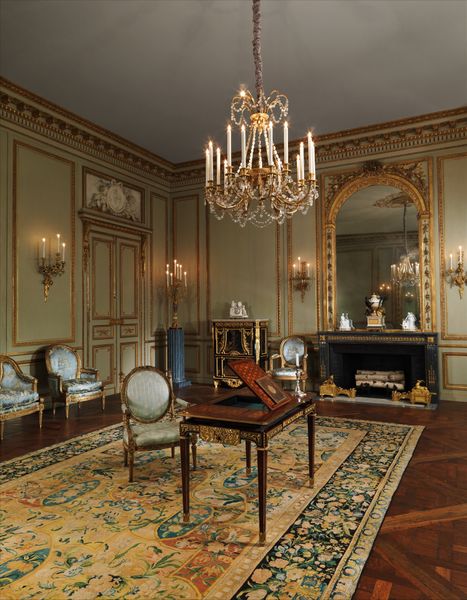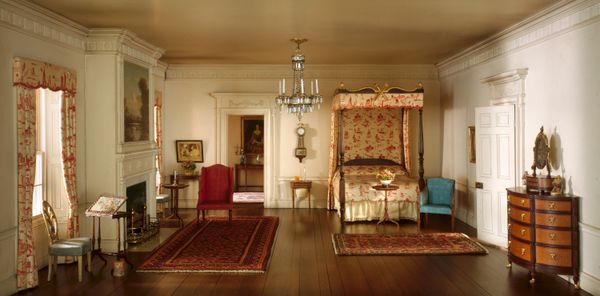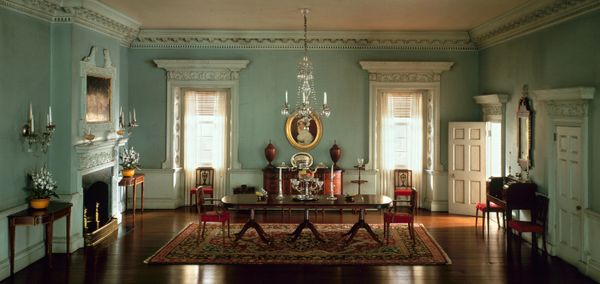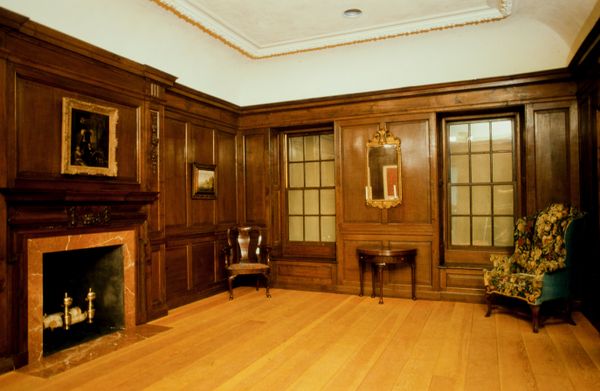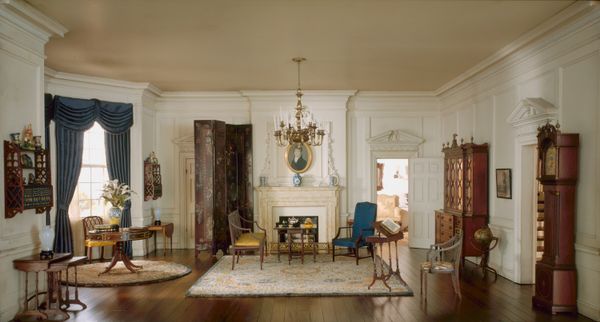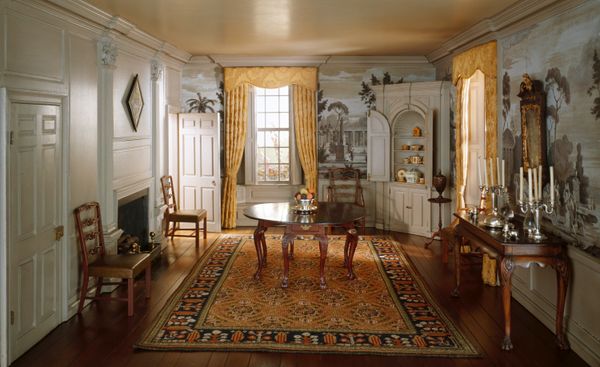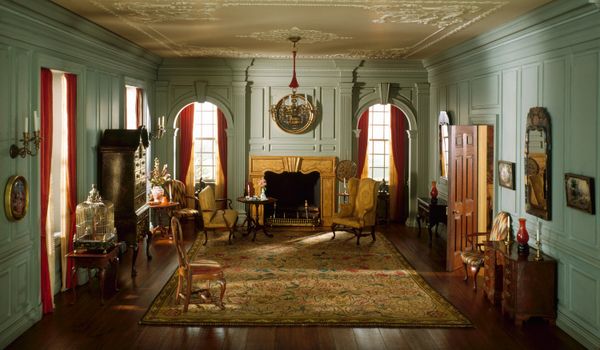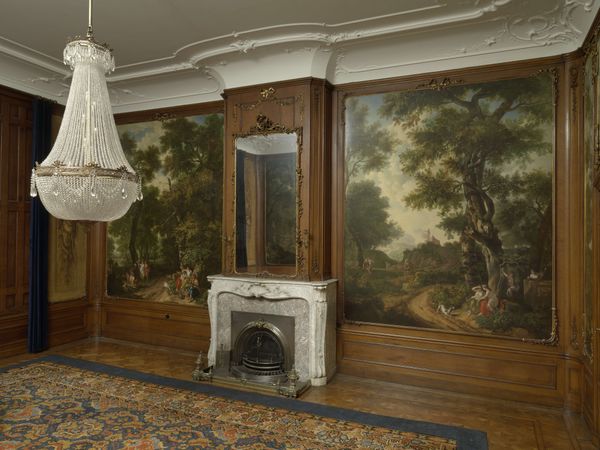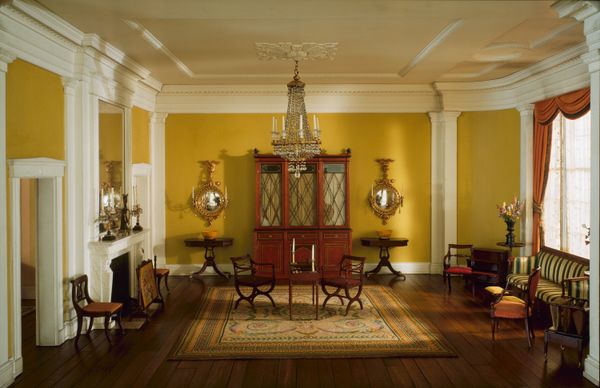
painting, sculpture, architecture
#
portrait
#
interior architecture
#
painting
#
landscape
#
traditional architecture
#
sculpture
#
genre-painting
#
decorative-art
#
architecture
#
rococo
Dimensions: confirmed: 20 ft. 2 in. × 35 ft. 5 in. × 23 ft. 5 in. (614.7 × 1079.5 × 713.7 cm); width extending into window niches 24 ft. 8 in. (751.8 cm).
Copyright: Public Domain
Curator: Walking into this room, one is immediately struck by its elegant simplicity. We are looking at the dining room from Kirtlington Park, dating back to 1748, currently residing here at the Metropolitan Museum of Art. Editor: It feels… strangely muted for a dining room. The color palette is so restrained, almost dreamlike. An imposing stillness permeates this decorative space. Curator: Rococo interiors often performed very specific social functions. Dining rooms like this became stages for elaborate displays of wealth and power. Think about the architecture here and its relationship to gender. Public rooms were controlled, masculine spaces, meant to impress visitors. Editor: The oval mirrors and swirling plasterwork framing the windows create a mesmerizing repetition, a sort of echo through time. I'm particularly drawn to the motif of the pastoral landscape visible through the windows; there is an enduring symbol of Arcadia. Curator: Precisely. Consider the portraits, always of men, dominating the visual field in these spaces, setting an unquestionable masculine tone. The women present would be largely excluded from its control or discourse. They were meant to decorate this set in a way not unlike the other ornaments. Editor: I suppose that chandelier represents another recurring image of privilege. The way its many lights glint suggests the family's prominence. Curator: This kind of decorative art was instrumental to solidifying social standing. Remember, these choices weren't merely aesthetic but deeply intertwined with power structures. What messages were these architectural symbols designed to communicate to the world? Editor: It is quite a thought. Analyzing this decorative set in a dialogue between architecture, society, and gender unveils many layers of a complicated narrative. Curator: Absolutely. Appreciating artwork like this requires examining the roles such interiors played in historical society.
Comments
No comments
Be the first to comment and join the conversation on the ultimate creative platform.
